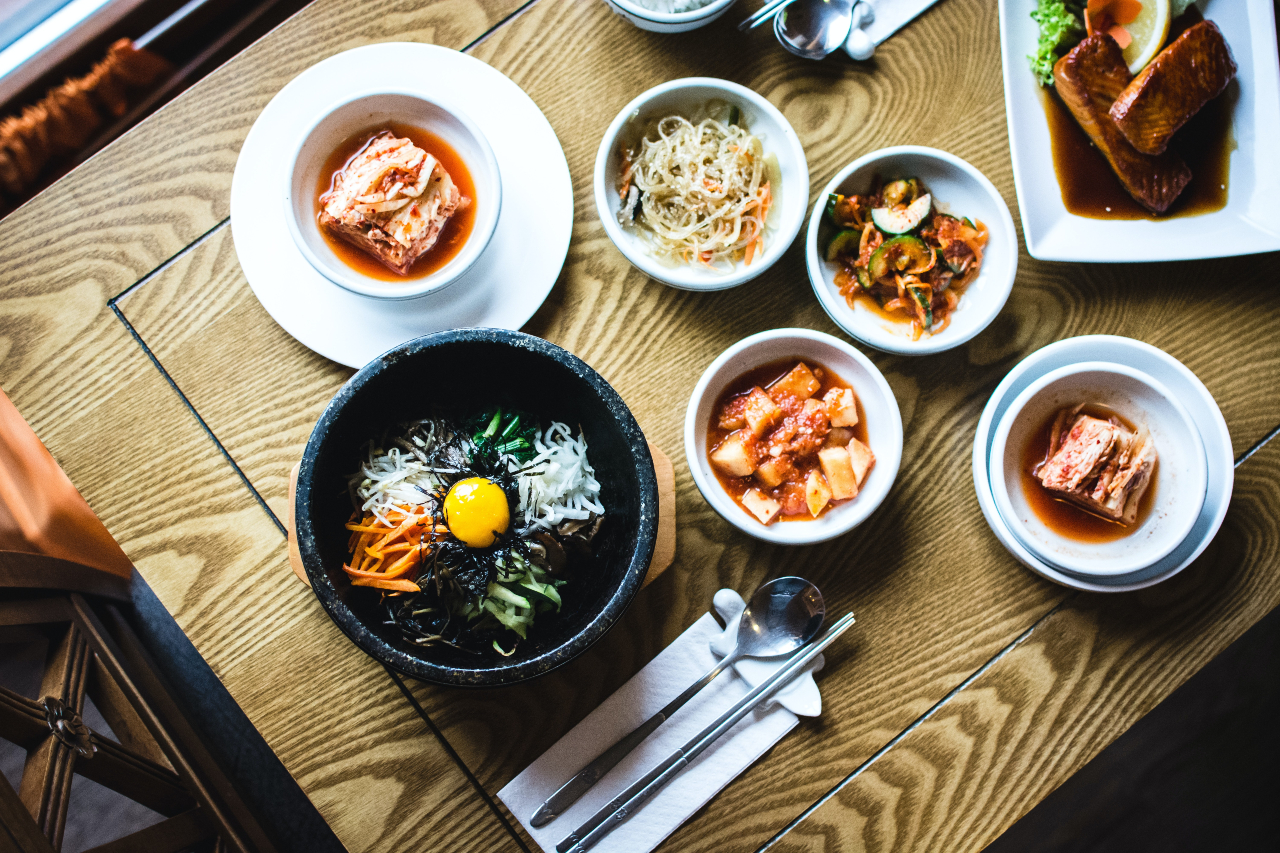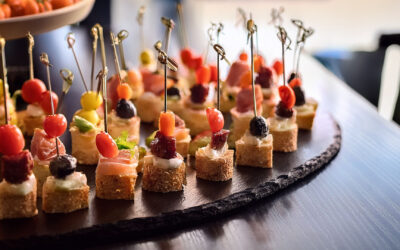We often say that food helps bring people together. The right dish prepared in the correct way can transport us to a different place, and in this case, it can help mentally transport us back home.
After spending 20 years working on college dining, Creative Dining employee Angela Matusiak knows the impact of a properly-prepared meal. Growing up actively surrounded by her Korean heritage meant foods like kimchi, gochujang, rice, and bulgogi were frequent mealtime staples. It also meant that when she encountered improperly prepared Korean food elsewhere, it negatively impacted the quality of her dining experience.
From senior living home dining rooms to campus dining halls, offering a varied menu keeps diners engaged, interested, and happy. But when mixing in dishes inspired by different cultures, ensuring we honor those dishes’ origins is as important as the appeal of the dishes themselves.
Small Details Matter

In an industrial kitchen, Angela doesn’t use recipes that her mother would cook at home, but she regularly applies the principles she learned when cooking with her. In her words, “large-batch cooking and home cooking don’t go together very well.” Her mom never cooked something the same way twice, rarely relying on—or writing down—a recipe. But the little lessons she’s learned from cooking with her mom have made all the difference in bringing authenticity to her dishes.
“It’s about the little touches, like cutting radishes correctly for a soup, or cutting carrots differently,” Angela said. “Making sure you’ve got the correct ingredients beyond just the main ingredients.”
For example, Angela highlighted the importance of having black vinegar and Sichuan peppercorns to make authentic Chinese recipes from the Sichuan province in China. When she worked in university dining, many guests were surprised to see saltine crackers served alongside Mexican shrimp cocktails, not just tortilla chips. But seeing saltines served with them helped Mexican diners feel seen, and it’s small details like these that help make a dish truly authentic.
One of the most important factors to keep in mind when planning authentic dishes is that not everything fits into the American meat-veggie-starch mindset. Pho, for example, is a soup served entirely on its own with no sides. Although rice is an important part of the Korean diet, lettuce is also an important component when eating Korean BBQ. Japchae, a sweet potato glass noodle, is often served with rice on the side, despite Americans generally not eating noodles and rice together. Ramen can also be eaten with a side of rice.
Sometimes the best part of a meal isn’t the meat and potatoes of it—or as Angela calls them, the rice and kimchi. But just like saltines with Mexican shrimp cocktails, bringing in tastes of home is often less about the main meal and more about the special touches accompanying it.
Giving the People What They Want

When Angela began working in college dining 20 years ago, she wanted to see foods in the dining hall that reflected her Korean heritage, bringing delicious Korean dishes and foods from other cultures to an audience that likely had little previous exposure to them. Through her years in university dining services, she put great emphasis on researching flavors, proper ingredient preparation, and what diners truly wanted to see at the campus’ international food station.
As she more recently began working in a heavily Korean-influenced work environment, Angela had the opportunity to put her lifelong experience with Korean cuisine to work. Her vast knowledge of Korean fare and culture taught her that it’s not necessarily about being creative with food, it’s about being a good listener.
“When it comes to cultural food, you don’t need to ‘chef things up.’ People gravitate to what’s familiar, like plain pork belly, not fried pork. We offer toasted rice, which is a byproduct of the overcooked rice at the bottom of the pot, at the end of our lunch line. It’s not about over-complicating it, it’s about giving people what they want. Everyone was so excited when we started serving toasted rice.”
Research is the Key

America has long been described as a melting pot of cultures, so it makes sense that the food we serve would evolve to meet the changing desires of diners. When people of various cultures come to America, they often adapt their food to fit their surroundings. Perhaps they have access to ingredients difficult to find previously, or they may no longer have access to ingredients they once used regularly.
Angela describes food as “fluid and adaptable,” likening its evolution to the way languages continually change. Authentic cooking sometimes requires stepping a bit outside of what many may consider to be “normal,” and it can require malleability to create genuine food with less-traditional ingredients.
For example, tamarind paste is a tangy, dark, sticky paste frequently used in pad thai sauce. It’s more of a specialty food that isn’t always easily available in America, but of all things, ketchup has proven to be an effective workaround. With a few additional ingredients, chefs can turn this common condiment into a delicious sauce worthy of an authentic Thai dish.
But not all substitutions are created equal. “A Chinese student walking into the dining hall and seeing ‘chow mein’ made with spaghetti noodles? That doesn’t give them the same feeling of home,” Angela said. “It takes research and understanding to get it right.”
While the right substitution can make or break an authentic dish, sometimes the right ingredient is easily accessible but unexpected. For example, Angela had never made pho (pronounced “fuh”) before her time in university dining. She learned from international students that the secret to authentic pho was dark sugar, commonly known as “brown sugar” in the United States.
By engaging in research or experimentation to determine the best way to authentically recreate a cultural dish, we can provide diners with food that honors its origins and tastes fantastic.
Expanding Worldview Through Diverse Menuing
When a Creative Dining college account brought pho on campus, it wasn’t just students with Vietnamese heritage that partook. The interesting foods at their “Globe” station drew in students of all different backgrounds, introducing them to foods they might not otherwise experience.
“The ‘Globe’ station wasn’t meant to compete with the other food stations, but it added more variety and kept students interested in our menu. Every year, the students had the opportunity to branch out and discover new foods to enjoy.”
By exposing diners to different foods—and, Angela pointed out, using their proper names or pronunciations—we not only create a sense of belonging, but we can also expand the worldview of diners from all cultures. As more organizations strive to integrate culturally diverse foods, chefs must strike a balance between innovation, societal expectations, and honoring the dishes’ cultural origins.
Interested in incorporating global cuisine into your diner’s experiences? We know how to do it right.


